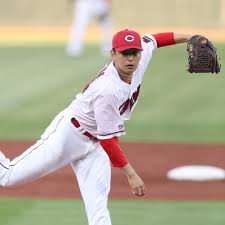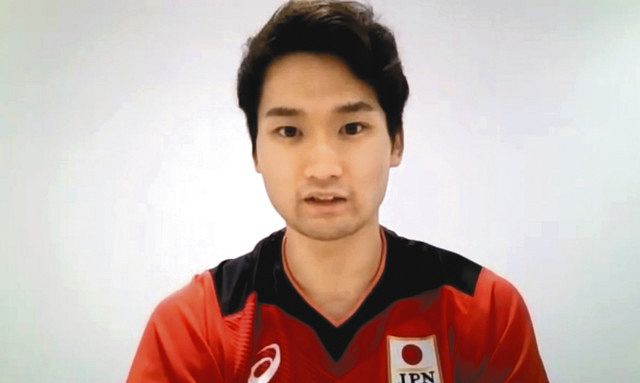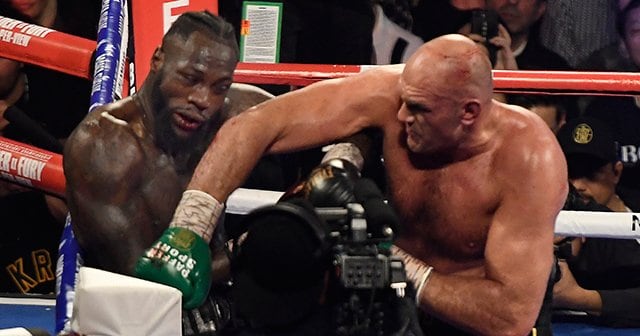
One of the essential elements for victory in Kendo is Debana techniques. This page provides easy-to-understand explanations of kendo’s debana techniques for everyone from beginners to advanced players.
Debana-waza is the technique of anticipating your opponent’s movements and delivering the first blow, giving you a huge advantage in a match.
Here, we introduce a wide range of Debana techniques, from the basic concept to practical methods, and even effective training methods.
Please make use of this article as it details the important information that all swordsmen learning Kendo should know in order to improve their technique.
目次
- 1 What are the debana techniques of kendo? Detailed explanation from the basics
- 2 Drills and training methods essential for learning debana techniques
- 3 Useful in practice! Kendo Debana Techniques Tips and Points
- 4 Examples of effective debana techniques and how to put them into practice
- 5 Debana techniques in Kendo matches: Effective usage and timing
- 6 summary
What are the debana techniques of kendo? Detailed explanation from the basics
In kendo, “debana-waza” is a technique that allows you to take the first move by sensing your opponent’s movements before or at the moment they perform a technique.
This technique is considered an extremely important element in a Kendo match, and being able to land a blow before your opponent can give you a huge advantage.
The importance of Debana techniques
Debana techniques can greatly affect the flow of the match.
A single blow often decides the match, and this technique is highly valued in Kendo.
The timing and accuracy of a technique are the keys to victory or defeat, so a swordsman must always be sensitive to his opponent’s movements.
Basic form of Debana technique
When performing debana techniques, it is essential to first read the opponent’s intentions and movements.
This requires great concentration and observation skills.
The basic form of the technique is to find a momentary opening when the opponent starts an attack, react quickly, and attack.
How to practice effective debana techniques
In order to acquire effective debana techniques, the following exercises are recommended:
- Repeated practice of basic movements : By repeatedly practicing the basic movements of Kendo, you will naturally learn how to use your body.
- Kata practice : Perform kata based on your opponent’s movements and practice movements based on actual matches.
- Interpersonal practice : Improve your practical skills by actually facing your opponent and trying out debana techniques while reading their movements.
Debana-waza is a technique in Kendo that requires a high level of skill and calm judgment.
It is not easy to master this, but with continued practice and proper understanding, you can significantly improve your Kendo skills.

Drills and training methods essential for learning debana techniques
Certain drills and training methods are effective for mastering debana techniques in kendo.
These exercises will help you improve your reaction speed and develop accurate technique.
Repetition of basic movements
The basis of debana techniques is the ability to react quickly and accurately.
In order to improve the accuracy of basic foot movements (footwork) and striking, we will practice repeating basic movements.
Thoroughly mastering the basic movements during daily practice will lay the foundation for improving your technique.
shadow kendo
“Shadow Kendo”, in which you repeat Kendo movements without an opponent, is effective for image training of Debana techniques.
Anticipate your reaction to a specific attack and practice quickly moving accordingly.
Drill to increase reaction speed
A good drill to improve your reaction speed is to practice reacting immediately to random attacks from your partner and performing debana techniques.
The partner launches an attack without warning, and the practitioner aims to detect this and perform the technique immediately.
video analysis
By analyzing videos of actual battles and training, we can find areas for improvement in the timing and technique of debana.
You will observe your own movements and those of your opponent in detail, and learn the timing of more effective debana techniques.
interpersonal training
During actual interpersonal training, you can practice reading your opponent’s movements in real time.
By regularly competing with swordsmen of different levels, you will develop the ability to respond to various attack patterns.
By combining these drills and training methods, you can efficiently improve your techniques to master Kendo’s best techniques.
Aim to steadily improve your technique through continuous practice and proper guidance.

Useful in practice! Kendo Debana Techniques Tips and Points
Debana techniques play an extremely important role in a Kendo match.
To successfully perform this trick, you need to understand certain tips and points.
Below, we will introduce tips and points for Debana techniques that will be useful in actual combat.
Developing predictive ability
The success of Debana-waza relies heavily on the ability to predict the opponent’s next move.
It is necessary to be sensitive to the other person’s minute movements, breathing, and changes in gaze.
By playing multiple matches, you will naturally develop the ability to read your opponent’s patterns.
Improve your ability to concentrate in the moment
Debana-waza is a technique that requires instant concentration.
Immediately before launching a technique, it is important to focus all of your attention on your opponent and move at the optimal timing.
This ability to concentrate can be improved by being conscious of it during daily practice.
Optimize how you use your body
In order to perform effective debana techniques, it is essential to optimize the use of your body.
In particular, it is necessary to smoothly coordinate the movement of the legs and the rotation of the body, and to master the physical manipulation needed to deliver a powerful blow.
Repetitive practice during rehearsals
Proficiency in Debana techniques increases through repeated practice.
By setting a specific scenario and repeating the same technique over and over again, you train your body to respond naturally.
The key to improving your technique is to repeat movements that simulate actual combat.
gain match experience
Finally, actual match experience is essential for learning debana techniques.
By participating in many matches and competing against various types of swordsmen, you will naturally acquire the timing and precision of the techniques used in actual combat.
By keeping these tips and points in mind and practicing daily, you can significantly improve your success rate with debana techniques in kendo matches.

Examples of effective debana techniques and how to put them into practice
There are a wide variety of debana techniques in Kendo, but here we will provide a detailed explanation of one technique that is considered particularly effective and how to put it into practice.
If you learn it, you can gain a huge advantage in the game.
Direct impact to the surface (Jikiduki)
Direct impact to the face is one of the most common and effective techniques among debana techniques.
The moment your opponent makes a move to attack, quickly move forward and punch him in the face.
Although this technique is simple, it is very effective as it attacks the opponent’s off balance.
How to practice
- Stance and Concentration : Start in a middle stance and focus on your opponent’s movements.
- Determining the timing : Determine the moment when your opponent takes a step.
- Rapid lunge : Once you sense your opponent’s initial move, quickly shift your weight forward and strike them in the face.
- Accurate hitting point : It is important to hit the ball accurately in the center of the surface. When striking, use the correct part of the bamboo sword and aim for a powerful blow.
Points to note in the match
- Observe your opponent’s reactions : When using this technique, you should always observe how your opponent reacts and act quickly before they go on the defensive.
- Maintaining balance : It is important to be careful not to lose your balance when attacking, and be prepared to return to the original position immediately after the attack is finished.
- Repetitive practice : Accurate execution of this technique requires a lot of practice. By repeating this in your daily practice, you will be able to do it naturally during a match.
A direct hit to the face is a very effective debana technique that can create a momentary gap in a kendo match.
With proper training and practice, you will be able to use this technique freely and it will become a great weapon in your matches.

Debana techniques in Kendo matches: Effective usage and timing
In kendo matches, debana-waza is a technique with great tactical significance.
Using this effectively requires the right timing and strategic approach.
Below, we will explain specific points regarding the effective use and timing of Debana techniques.
The importance of timing
The most important point in Debana techniques is “timing”.
This technique is most effective the moment your opponent begins to attack or shows intent.
It is important to be able to sense your opponent’s small movements, signs, and lapses in concentration, and the speed of your reaction to this will determine your victory or defeat.
Determine the initial reaction
The key to success is determining the initial movement of your opponent’s attack.
It is necessary to predict what kind of moves your opponent will use and react quickly the moment they start.
If you can determine your initial move, you will be able to move a little faster than your opponent.
read the other person’s mental state
In a Kendo match, it is very important not only to learn technique, but also to read the opponent’s psychological state.
Debana techniques tend to work particularly well against nervous opponents or opponents who are in a hurry to attack.
By reading your opponent’s psychology and exploiting their openings, you increase your chances of landing a blow.
apply continuous pressure
Continuously putting pressure on your opponent during a match makes it easier for your opponent to make mistakes due to nervousness or impatience.
If you perform a debana technique against an opponent in this state, your chances of success will increase.
By continuing to apply pressure, you create the perfect opportunity to counterattack the moment your opponent attempts an unreasonable attack.
Utilizing cooperative play
In team kendo matches, one strategy is to utilize cooperation with teammates to perform debana techniques.
While your teammates are putting pressure on your opponent, you can use debana techniques to deliver unexpected blows.
In order to effectively use debana techniques in kendo matches, it is necessary to always be aware of these points and hone one’s techniques through many practices and practical experience.
Executing a debana technique at the right time can give you a huge advantage in a match.

summary
Debana techniques in Kendo play an extremely important role in the match.
In order to use this technique effectively, it is important to practice and keep the following points in mind:
- Assessing timing : Sensitively sensing the opponent’s movements and intentions and launching a technique at the optimal moment.
- Prediction ability and reaction speed : Develop the ability to quickly read the opponent’s initial movements and respond quickly.
- Psychological aspect : Understand the opponent’s psychological state and use their tension and impatience to decide on techniques.
- Mastering basic movements : Thoroughly practice basic techniques in daily practice and optimize how you use your body.
- Practical experience : Experience and master how to use debana techniques in actual battles through many matches and interpersonal training.
Debana techniques greatly contribute to success in Kendo matches, so practicing these points effectively and making them your own is the key to improving your competitiveness.
Through repeated practice, correct understanding, and application in actual combat, you will be able to master the art of debana as a kendo technique.





